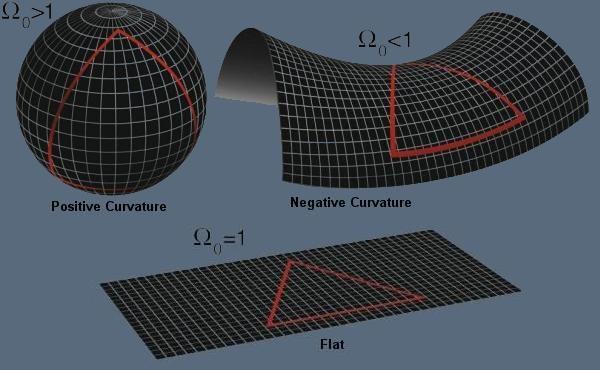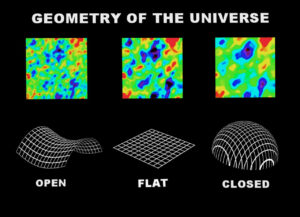

There are three possible geometries of the universe: closed, open and flat from top to bottom. The closed universe is of finite size and, due to its curvature, traveling far enough in one direction will lead back to one’s starting point. The open and flat universes are infinite and traveling in a constant direction will never lead to the same point.
Universe with positive curvature. A positively curved universe is described by elliptic geometry, and can be thought of as a three-dimensional hypersphere, or some other spherical 3-manifold (such as the Poincaré dodecahedral space), all of which are quotients of the 3-sphere.
The universe could be positively curved, like a sphere. … In a flat universe, Euclidean geometry applies at the very largest scales. This means parallel lines will never meet, and the internal angles of a triangle always add up to exactly 180 degrees—just like you’re used to.
Is there an edge to the universe?
Ballooning universe. But how can the universe be expanding if there is no end or edge to it? … That is, the concentration of matter in the universe is decreasing as the universe expands, she said. That’s because galaxies aren’t moving away from each other through space — it’s space itself that is getting bigger.
Is there an end to space?
Whether space ever ends is a hard question. There is a limit to the space that we can see, because if there is stuff beyond 15 – 20 billion light years (the age of the Universe) the light from there hasn’t reached us yet. So we don’t know.
What is at the center of the universe?
FYI: Where Is The Center of the Universe? First, it’s important to know that the big bang wasn’t an explosion of matter into empty space—it was the rapid expansion of space itself. This means that every single point in the universe appears to be at the center. Think of the universe as an empty balloon with dots on it.






























